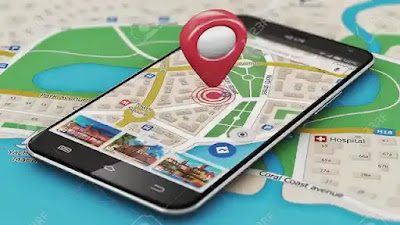System applications - GPS
GPS applications are applications that use GPS technology to locate a device and provide navigation and direction services. Some of these applications include:
1- Google Maps: It is the most famous application for navigation and guidance, as it provides accurate maps and information about roads, areas, facilities, and places.
2- Waze: Another navigation and routing app that provides live updates about traffic, accidents, and problems on the road.
3- Apple Maps: It is the default navigation app for iOS and features accurate maps and information about places and areas.
4- Here WeGo: It is a free navigation and direction application that provides accurate maps and information about places and supports many languages.
5- MapQuest: It is another navigation and routing application that provides information about places, regions, and roads, and supports many languages.
These applications are distinguished by providing real-time navigation and guidance services, and precise geographic positioning, and some of them provide search services for places, facilities, stores, restaurants, and others. Some of these applications also provide custom mapping and routing options, helping users avoid traffic jams and reach their destinations in the fastest way possible.
How accurate is GPS technology in these apps?
The GPS technology used in these apps is usually very accurate, with most devices and apps able to pinpoint a user's location with an accuracy of a few metres. The accuracy of GPS technology depends on several factors, including the number of available satellites, the quality of the GPS receiver in the device, and the conditions of the environment in which the device is used.
Most modern smartphones and tablets have built-in GPS chips that can pinpoint the user's location with great accuracy. These devices can also use additional location technologies, such as GLONASS or BeiDou, to improve location accuracy.
However, there are some limitations to the accuracy of GPS technology. For example, tall buildings or other structures can block GPS signals, making it more difficult to determine the user's location. In addition, GPS signals can be disturbed by environmental factors such as heavy clouds or electromagnetic interference.
In general, the GPS technology used in these navigational applications is usually accurate and reliable, and can be a valuable tool for navigating and exploring the world around us.
What are the most popular navigation applications that use GPS technology?
There are many navigation applications that use GPS technology to determine the user's location and provide different directions and routes, and among these applications the most popular are:
1. Google Maps: Google Maps is one of the most popular navigational applications used by millions around the world. The application provides accurate maps and information about roads, places and facilities.
2. Waze: Waze is a social navigation application that allows users to share information about traffic, accidents, and other problems on the road. The application uses GPS technology to locate the user and provide directions.
3. Apple Maps: Apple Maps comes as the default navigation app for iOS devices, providing accurate maps and information about places, areas, and facilities.
4. HERE WeGo: This application provides navigation and direction services, obtaining information about places, areas and walking paths.
5. MapQuest: MapQuest is one of the first navigational applications that appeared, and it features accurate information about places, routes, and areas.
These navigational applications are characterized by providing effective and accurate navigation and guidance services, and providing information about different places, regions, and paths. These applications also use advanced GPS technologies to determine the user's location with high accuracy and provide accurate directions.
Can navigation applications work without an internet connection?
Some navigation applications can work without an Internet connection, using the technology to store maps and data on the mobile device. These maps and data are pre-loaded on the device, enabling users to use the app without the need for an internet connection.
However, you should be aware that downloading maps and data takes up a lot of the internal memory of the device, and it takes time to download them. Some location errors may occur, especially in areas where maps have not been previously downloaded.
Some navigation applications that rely on an Internet connection, such as Google Maps or Apple Maps, can also store some maps and information locally on the device, to enable users to use some functions without the need for an Internet connection. These apps can update locally stored maps and data when connected to the Internet.
In general, some navigation applications can work without an Internet connection, using technology to store maps and data locally on the mobile device. However, you should be aware that full use of the navigation applications requires internet connection to provide the best services, information and directions.
Can navigation applications work completely without the need for an Internet connection?
It depends on the type of navigation app and what features it has. Some navigation applications such as Navmii, Sygic and HERE WeGo allow users to use them completely without the need to connect to the Internet, as the required maps and information are stored on the mobile device. Maps and information can be updated when connected to the Internet.
However, be aware that some functions that require internet connectivity may not be available in these applications when used offline, such as traffic updates and live directions. Also, applications that require downloading maps and information on the device may take up a lot of spacen internal memory of the device and it takes time to download.
In general, some navigation applications can function completely offline, using technology to store maps and data locally on the mobile device. However, you should be aware that full use of the navigation applications requires internet connection to provide the best services, information and directions.
